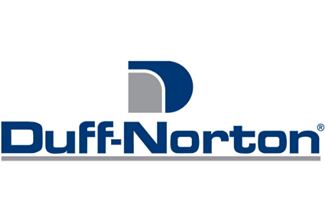
Why Convert to Electric Actuators?
Manufacturing | Power & Motion Technology | By Duff-Norton | 20 Feb 2019
When it comes to choosing the right linear actuator, there are a number of options you can go for. You can read up on how to choose the right linear actuator for your application in our free guide here, but below we’ve outlined three real case studies that support the use of electric actuators.
The Railroad Industry
Challenge: A railroad company used hydraulic-powered moveable bridges to lift rails and move locking pins. However, the hydraulic fluid would leak into the waterway below and every time this happened the company received a fine for the spillage.
Solution: To solve this issue, the company replaced its hydraulics with Duff-Norton’s SuperCylinder electric cylinders. Doing so completely eliminated the risk of spills, environmental contamination, and associated fines.
The Paper Industry
Challenge: A paper company used a hydraulic-powered upender to rotate large, heavy rolls of paper. Similar to the railroad company, the hydraulics were prone to leakages, which would end up damaging entire rolls of finished paper. This would cost the company thousands of dollars in scrap with each leak.
Solution: The paper company replaced their hydraulic upenders with Duff-Norton SuperCylinder electric cylinders, capable of moving 25-ton loads across a distance of 66 inches. In the four years since making this change, Duff-Norton’s SuperCylinders have delivered reliable performance with zero scrap, saving the paper company money.
The Manufacturing Industry
Challenge: A customer’s plant was out of compressed air capacity, but replacing their existing compressor or adding capacity was cost-prohibitive: an estimated $250,000 to $300,000. Furthermore, the pneumatics were inconsistent when they raised all eleven fixtures at once, with some raising faster than others, and at times with a jerky movement.
Solution: The customer replaced their pneumatic cylinders in their welding fixtures with reliable and efficient Duff-Norton CMLA-Series actuators. These electric-powered actuators offer a far superior performance, providing a movement that is ‘smooth as glass’ and raising/lowering all fixtures at the same time.
Using electric actuators will also save the customer money in the long-term because they can be used on demand, as opposed to pneumatic compressors which must operate constantly to maintain the required pressure needed to run the cylinders.
Switching to Electric
Electric actuators offer many advantages over hydraulic or pneumatic actuators. They are generally easier and cheaper to install, operate and maintain, often saving businesses money and reducing the impact on the environment.
If you’d like to find out whether electric actuators are right for your application, get in touch with one of our experts today.
Contact Our Engineering Team For A Free Application Analysis
Duff-Norton
As a leading engineering manufacturer of reliable industrial lifting and positioning products, Duff-Norton is comprised of individuals with in-depth industry experience. Articles authored by Duff-Norton belong to a collection of blogs written by product and application experts throughout the organization.




 Central America-Andean-Caribbean - EN
Central America-Andean-Caribbean - EN


